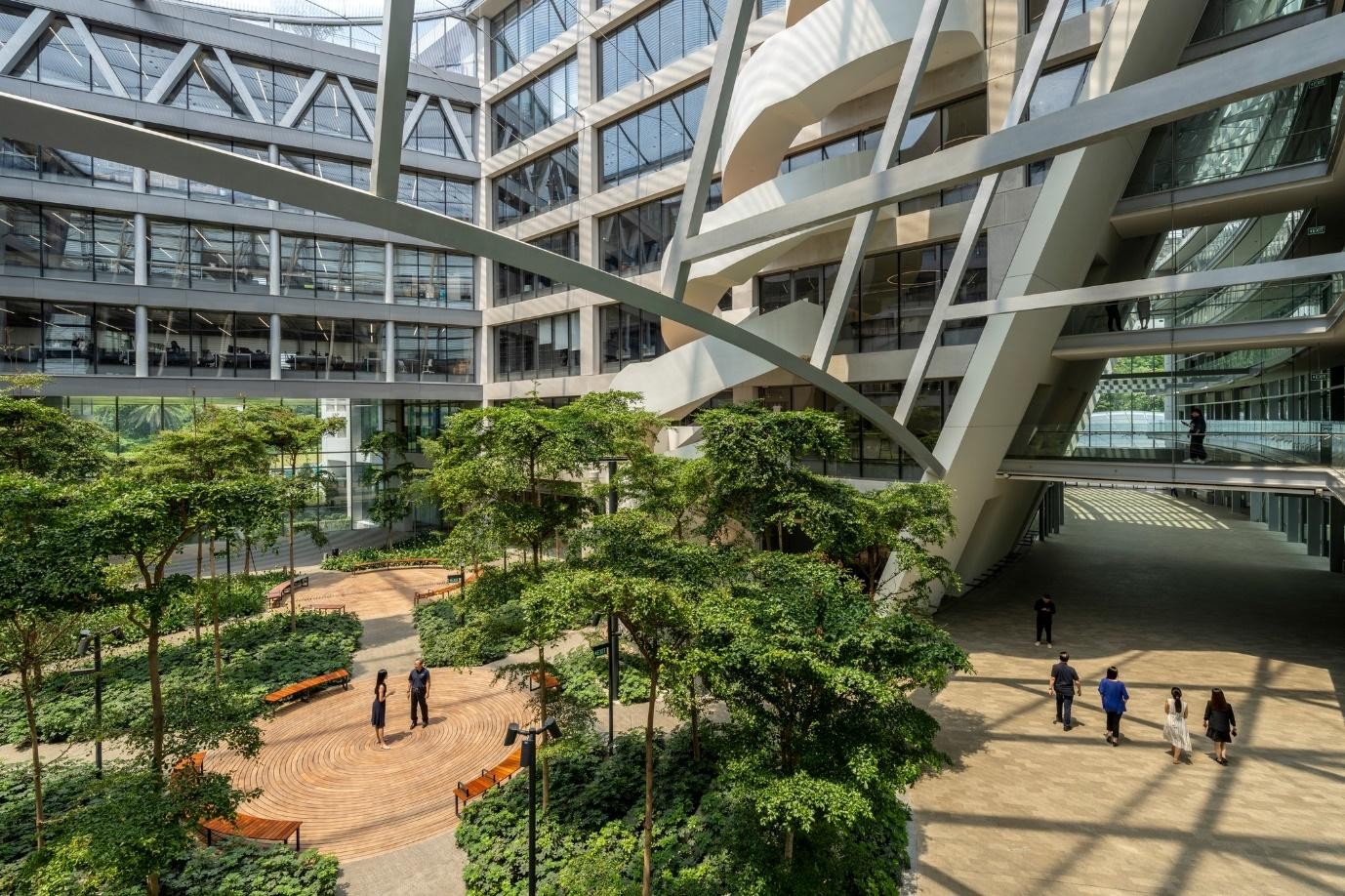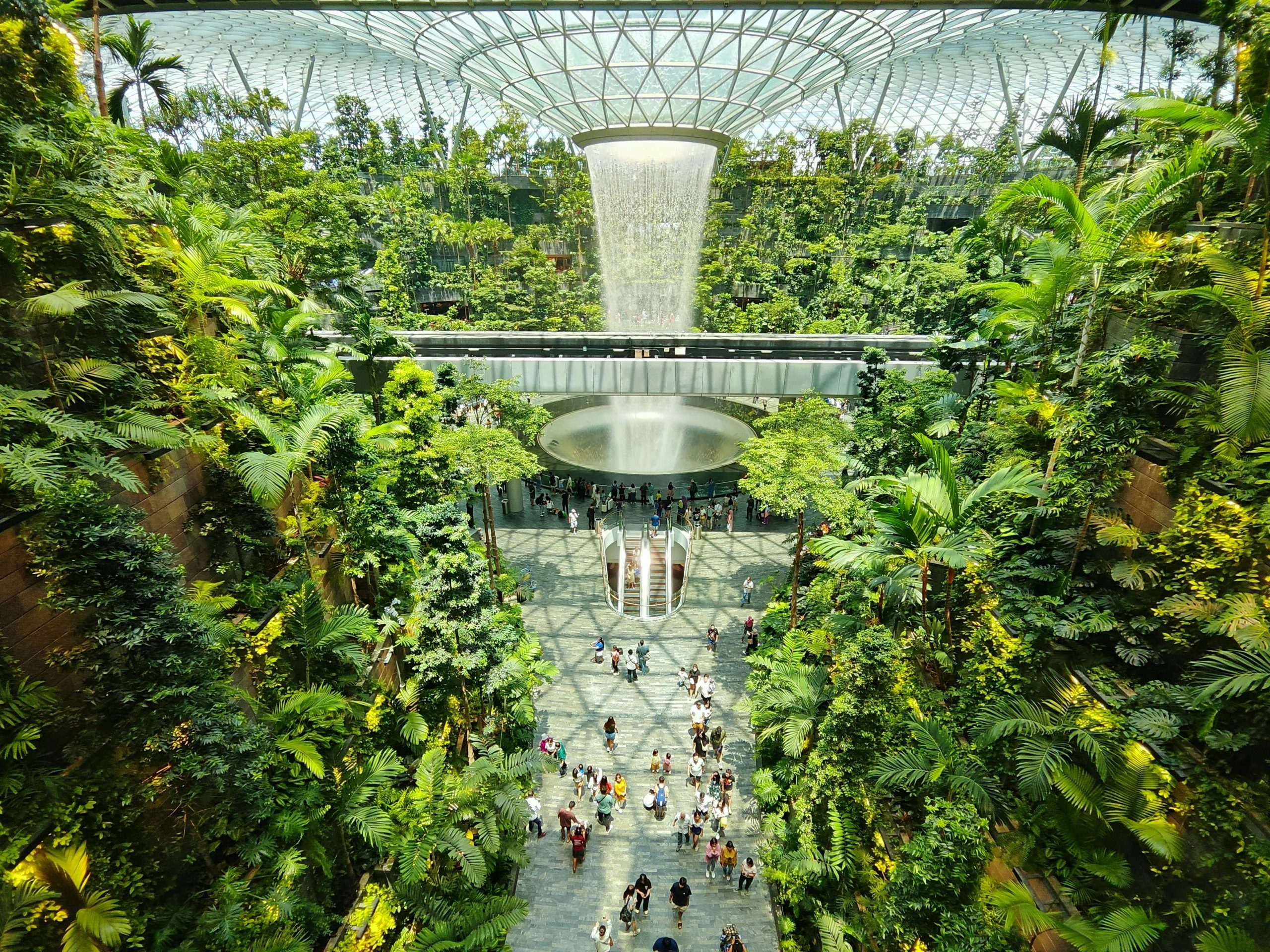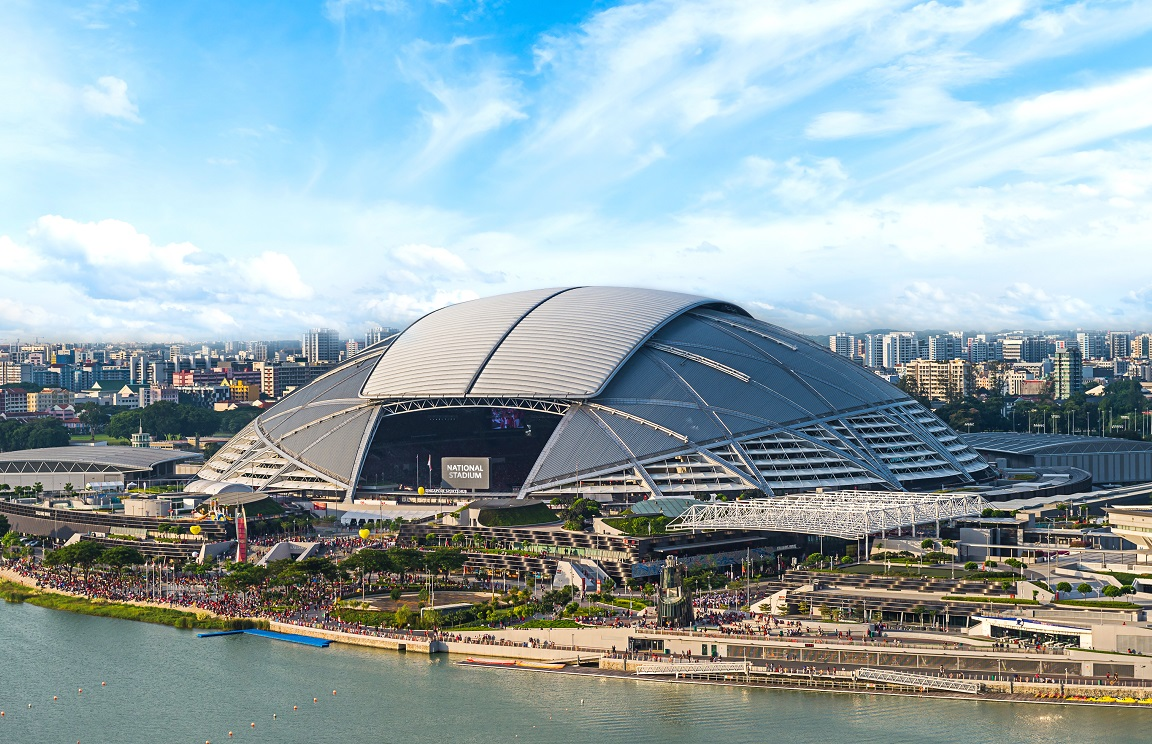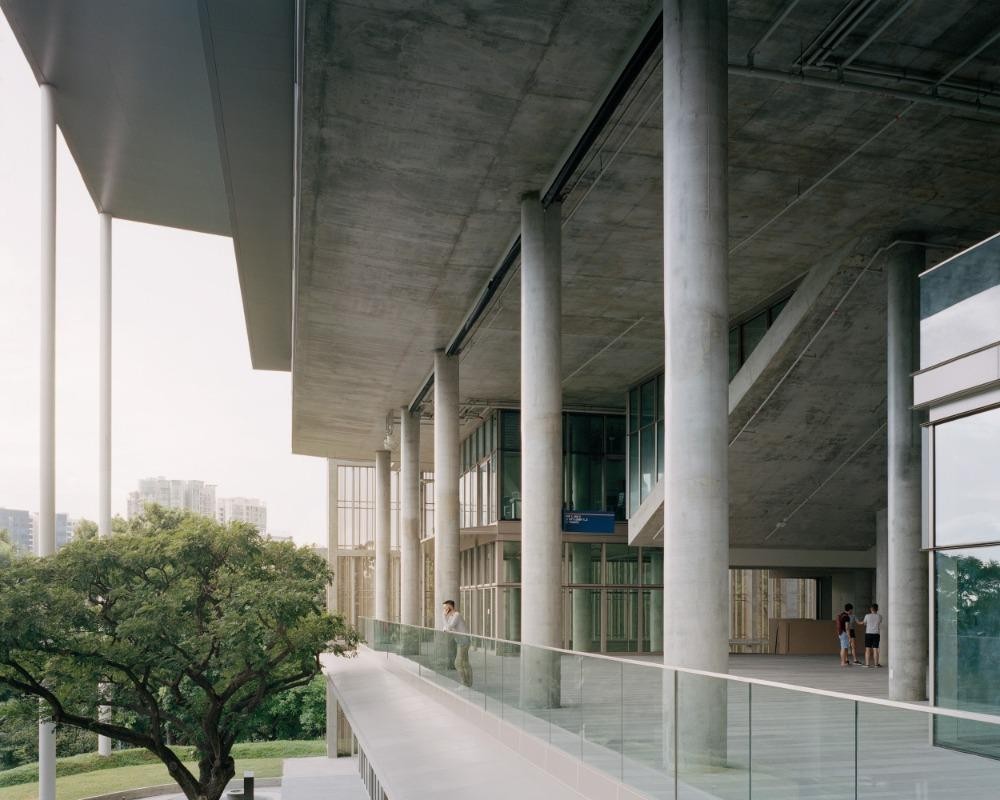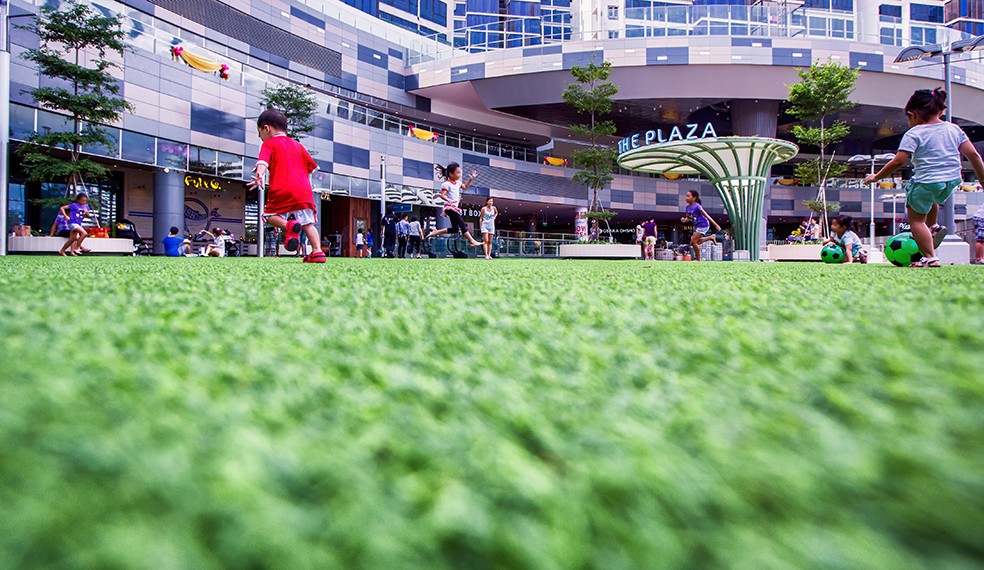As cities become denser and climate challenges intensify, green buildings are proving to be more than just an environmental solution—they’re transforming how we live, work, and thrive. Chen Wenjie, Associate Director at Building System & Diagnostics and Climate Asia, is at the forefront of Singapore’s efforts to create sustainable and human-centric spaces. His work spans advising on energy-efficient designs, optimising building performance, and helping clients achieve green certifications.
In this episode of our “Let’s Go Talk” series, Wenjie shares how integrating green practices into buildings enhances our productivity, health, and wellbeing while also providing long-term financial and environmental benefits.
Q: Why are green buildings important?
Green buildings are crucial because they address the pressing issue of climate change, which we can tangibly experience, even in Singapore. Given our small land area and high building density, our buildings consume over 30% of the nation’s electricity and account for more than 20% of carbon emissions.
Buildings use significant resources, and their energy and water consumption directly contribute to carbon emissions, which exacerbate global warming and temperature increases.
As environmental sustainability consultants, we strive to align our efforts with the Singapore Green Building Master Plan. This plan includes the “80-80-80” goals: greening 80% of Singapore’s building stock, ensuring 80% of new buildings achieve super-low energy status regardless of type, and improving overall building efficiency by 80%. These efforts are vital for reducing environmental impact and building a sustainable future.
Q: We’ve been hearing a lot about “Sick Building Syndrome.” What does this mean?
Sick Building Syndrome is when occupants experience symptoms like irritated eyes, runny noses, and discomfort after spending extended periods in an air-conditioned space. These symptoms can lead to increased sick leave and reduced productivity.
To prevent this, the BCA Green Building Mark includes a section dedicated to health and well-being, focusing on eliminating factors contributing to these symptoms. The main principle is to reduce the source of these issues, often caused by volatile organic compounds (VOCs), for example formaldehyde, found in materials like furniture, flooring, adhesives, and paints. Green buildings mitigate this by specifying low-VOC and formaldehyde content in materials, ensuring they meet international or local standards. From a consumer perspective, looking for higher ratings in systems like the Singapore Green Building Council’s certification for green building products can indicate better indoor air quality, benefiting both residential and commercial spaces.
Q: Are there features in a building that can prevent “Sick Building Syndrome”?
To counter Sick Building Syndrome, green-certified buildings incorporate both design measures and ongoing monitoring. The design focuses on using materials with low-VOC content to prevent harmful pollutants affecting the indoor air quality.
Additionally, regular laboratory tests are conducted using calibrated equipment to measure the compounds’ concentration in the space. Many green buildings also feature real-time air quality monitoring devices, which display indoor air quality data at fixed intervals. This data is typically stored in cloud storage and allows occupants to access real-time readings, similar to how outdoor air quality (like PM2.5 concentration) can be checked. This continuous monitoring ensures that the space maintains healthy indoor air quality and helps prevent Sick Building Syndrome.
Q: How do green buildings help improve indoor environments for the people in the building?
Green buildings offer numerous benefits, particularly for people who spend significant time indoors, such as in Grade A commercial office spaces. Developers incorporate green building features like energy-efficient air conditioning, lighting fixtures, and mechanical ventilation to meet the growing demand from tenants who prioritise sustainability.
One key driver is the shared goal of reducing global warming, but more importantly, as we return to offices more often post-COVID, indoor environments have become a focal point. People are spending more time indoors, making features like indoor air quality and ventilation increasingly critical.
Green buildings enhance indoor air quality by optimising fresh air intake and using advanced filtration systems like MERV 14 or MERV 15 filters. These measures not only improve comfort and wellbeing but also align with the heightened awareness of the importance of fresh air ventilation after the pandemic. For tenants, these improvements create healthier, more conducive office spaces, meeting both environmental and occupant needs.
Q: Does a certified green building have an impact on productivity or concentration for building users?
Certified green buildings can positively impact productivity and concentration by improving Indoor Environmental Quality (IEQ). IEQ includes factors like air quality, acoustic performance, and temperature control. Poor acoustics, such as traffic noise or conversations, can disrupt focus, while good acoustic design enhances concentration. Thermal comfort is equally important; green-certified spaces often feature zonal control, allowing different areas to have tailored temperatures, such as 26°C in one zone and 25°C in another. This flexibility supports individual preferences and improves comfort.
Q: As a homeowner or prospective home buyer, what should I look out for in a residential development to know that it has green building features?
As a homebuyer or homeowner, there are a few key factors to look for in residential developments to determine if they are green. First, check for energy efficiency ratings and water-efficient fittings, which may be indicated by specific labels or “ticks.” Higher ratings, such as PUB WELS certification for water fittings, are a positive sign. Additionally, it’s important to assess the building’s cross-ventilation. When visiting show units or reviewing layout plans, ensure that the windows and doors allow for proper airflow. A simple way to check is by visualising a straight line across the layout—if it can pass through without obstruction, it indicates good cross-ventilation, allowing for natural wind to flow through the space.
Q: It seems that incorporating sustainability is only possible for new developments. What about existing and older buildings?
Certifying existing buildings as green buildings comes with challenges, primarily because these buildings often have limitations that cannot be easily modified, such as their façade or structure. Altering these components would require significant demolition and rebuilding, which is often not feasible.
The process typically begins with an energy audit, where consultants like us assess the building’s energy consumption profile. We identify hotspots—areas or equipment that consume the most energy—and evaluate their efficiency based on Singapore’s standards. This helps pinpoint which systems are underperforming and need upgrades.
A key challenge lies in convincing building owners to make these changes. Many believe that their building, which may have been operational for 20–30 years, is functioning well enough. This is where advocacy comes into play. We highlight the environmental benefits and align them with government policies and incentives, such as the BCA Green Mark certification. This certification quantifies energy savings and reduced carbon emissions, offering financial incentives for green upgrades.
Ultimately, clients are often persuaded by tangible results, such as quantified energy savings presented in terms of cost reductions. While the transition may be slow, awareness of the benefits of green buildings is steadily growing, and with proper guidance, existing buildings can contribute meaningfully to sustainability.
Q: What are some of the green building trends that you’re currently seeing now?
One of the prominent green building trends is the increasing focus on indoor air quality. Regardless of the building typology, occupants and visitors are highly aware of their comfort levels, particularly temperature and indoor air quality. This has led to a growing emphasis on ensuring a healthy and comfortable indoor environment.
Another trend is the rise of biophilic design, which integrates greenery, water features, and natural elements into buildings to create visually appealing and calming spaces. Additionally, the concept of green and smart buildings is becoming more interconnected. Developers are not only focusing on sustainability but also incorporating smart technologies to enhance user experience and awareness.
For instance, many new buildings feature interactive dashboards and monitors that provide real-time data on the building’s performance. These displays show details such as air conditioning efficiency, helping occupants understand the building’s green credentials. This integration of smart and green features not only optimizes building performance but also engages and educates users about sustainability.
Q: How has the role of technology evolved to support green buildings?
Technology is a crucial component of green buildings because modern buildings serve increasingly complex functions beyond their basic purpose. For instance, they must ensure spaces are cool, fresh air is ample, and facilities like toilets are clean while enabling user feedback. The ultimate goal is to create a comfortable and efficient environment where users and visitors can work or enjoy the space seamlessly.
To achieve this, numerous parameters need to be monitored and tracked, which is where technology plays a key role. For example, operational efficiency is assessed using submeters that monitor electrical usage. These meters are integrated into the building management system, providing real-time data to ensure the building performs according to its design intent.
Another significant advantage of technology is its ability to enable predictive and preventive maintenance. Advanced systems can alert facility management teams to potential equipment issues before they occur, triggering alarms for proactive action. This reduces equipment downtime, minimizes disruptions, and enhances the overall performance and sustainability of the building.
Q: What should people be more aware of when it comes to carbon emissions in buildings?
Carbon emissions in buildings can be broken down into three types: Scope 1, Scope 2, and Scope 3.
Scope 1 refers to direct emissions from things you own or/and operate, like company vehicles or equipment.
Scope 2 covers emissions from the energy you purchased and use, like electricity for air conditioning or lighting fixtures. The key here is the source of your energy—using green power can help reduce emissions. Also, cutting down on overall energy consumption lowers your emissions.
Scope 3 includes everything else, like waste disposal, business travel, and other services you rely on.
For most people, Scope 2 emissions (electricity) are the most significant. However, to make a meaningful impact, it’s crucial to monitor all three emission scopes — reducing energy consumption, transitioning to cleaner energy sources, and being mindful of other indirect emissions.
Q: What’s the highest source of carbon emissions in a home setting?
Air conditioning takes the top spot. It’s become essential for many of us, especially when I look at my HDB block; all but one unit has an air conditioner installed.
Q: What can people do for their homes to reduce carbon emissions?
One simple change is adopting hybrid ventilation. Try increasing your air conditioning temperature to 27°C and using a fan. You might be surprised—you can still feel comfortable because factors like activity levels affect our thermal comfort. Most of the time at home, we’re either sleeping or watching TV, so we don’t need that chilly air.
Another tip is to create good airflow through your home. By opening your doors and windows for proper true cross ventilation, you can reduce the need for air conditioning and cut down on electricity usage. A little breeze can go a long way in keeping your home cool and energy-efficient.

